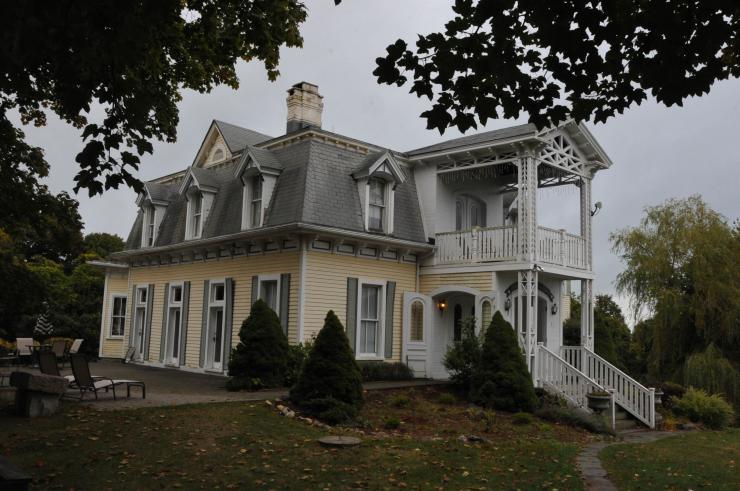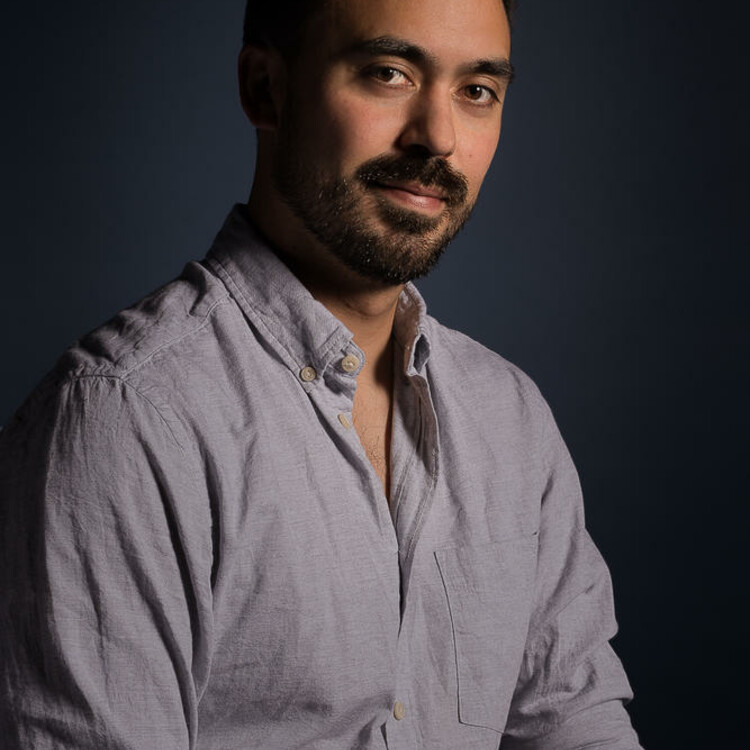The O’Neill
Art, Money, Home
The sun begins to arc higher in the sky, rain washes the winter slush away, the temperature spikes above sixty degrees, bikini bodies begin to cover a Central Park that everyone forgot could be green, restaurants put out their highly coveted outdoor seating—and all the theatre people leave New York City. Well, not all, but for those working in the business it often feels like that is the case. New York is a seasonal beast and the theatre culture is no different. As with most industries, theatre follows the money. And where does the New York money go in the summer? To the Hamptons, Connecticut, the Berkshires, upstate New York, etc. The wealthy flock to their summer homes on or near a beach—and behind them trail legions of theatre artists. In all of these areas you will find established theatre organizations that built their reputations off of their summer programming. These are the summer homes for actors, designers, and technicians. Not the home where you have breakfast out on a private balcony overlooking the ocean and then leisurely stroll into a quaint little town for antiquing, but the one where you wake up next to three or four people in various states of undress and intoxication in a room that, if you’re lucky, has a box fan in the window, and rush out the door to catch a production meeting (for which you’re already late) that is happening on your front porch. Does anybody flinch when you squeeze in between a nineteen-year-old bright-eyed, bushy-tailed intern and a sixty-year-old Broadway legend, wearing the same thing everyone saw you in the night before but with a different sweatshirt? Maybe the production stage manager, but it’s okay, you’ll buy them a drink in the pub later. Everyone else smirks and resumes discussing how a playwright envisions their piece with an unlimited budget.

Such is a typical morning at the historic proving ground for new American theatre called the Eugene O’Neill Memorial Theater Center, which overlooks the Long Island Sound along the Connecticut coast. To the north, the bustling sounds of Ocean Beach Park with its boardwalk booths, waterslides, and booming music echo across the open fields separating the O’Neill from water line. Sails litter the surface of the water, drifting lazy across the horizon. Such is the vista as you walk the path from a historic mansion turned administrative offices to one of the performance or living spaces on the other side of the grounds. It might be the closest you get to the beach for the week, for you have rehearsals, production meetings, performances, and an on campus pub to frequent, but on your one day off you’ll spend all day on that beach if it kills you, go get fresh lobster rolls down the road, stop by the pub again, and go back to the beach at midnight with a group of people that couldn’t get to sleep before 2am if their lives depended on it. Wash, rinse, repeat.
This is the O’Neill.
The O’Neill many of us think of come December while huddling in a tiny apartment, stuck staring at a computer screen in a basement office, or cozying up to a bar while it pours slush down outside. We forget about the questionable food, tight living quarters, lack of privacy, severe lack of air conditioning, slim wages, and often insane work hours. What sticks with us are the memories, the laughs, and the stories. A camaraderie between disparate artistic souls bound by a common purpose: make theatre happen against all odds.
Something unique about the O’Neill is its success in encouraging dialogue and productive tension between what some of us consider ‘money theatre’ and ‘art theatre.’
The kind of theatre on which the O’Neill “should” or “should not” focus, however, as a developer of New York, is an ongoing debate among its residents. Something unique about the O’Neill is its success in encouraging dialogue and productive tension between what some of us consider “money theatre” and “art theatre.” On one hand, it houses the National Theater Institute (NTI)—an undergraduate level semester-long intensive training with a tendency towards the experimental and avant-garde. Students spend an entire semester isolated on the fog-ridden grounds finding exhilarating ways to stage Shakespeare, Chekhov, Sarah Kane, Charles Mee, and everything between in ways outside of what is traditional. Students have developed theatre companies from their semester groups and become recognizable generative artists as individuals, a number of whom are thriving in the Off and Off-Off Broadway circuit, and they often come away from the program with a near cultish reverence to their idea of The O’Neill. So much so that there have been instances where, upon entering a summer conference environment largely aspiring for interest from Broadway, a culture shock has so crippled these radically oriented young artists that they have to forfeit their positions and leave. Why? Because on the other hand there is a force and tradition at work that precedes NTI and the bold minds it fosters. It is a practice and mentality about theatre that stems from the likes of August Wilson, Edward Albee, Wendy Wasserstein, and many others. Writers who were visionaries of their time, but nevertheless established—with the help of the O’Neill and institutions like it—a model of American theatre-making that has prevailed for the last fifty years:
1) A playwright submits to and/or gets selected by a regional institution of notable standing in the Broadway sphere of influence.
2) Said company mounts a workshop performance where members of the Broadway-level institutions attend.
3) The play is “picked up” by another institution, be it regional and/or Broadway, and a full production is mounted.
4) The play goes on tour and/or goes to Broadway.
At the time, this system was an exciting way to develop and build an aesthetic of the “great American play” and give voice to playwrights with a lot to say about the world in a particular theatrical style: kitchen sink dramas, magic realism, American “grit” plays. Plays that won Pulitzers and drew serious box office. But this scenario has turned away from plays that represent artistic style and has largely shifted to a consumer-driven, focus-grouped commoditization of pop culture spectacle. On top of that, the current Broadway model is increasingly less and less feasible as a sustainable business practice. Broadway has less actual risk-taking producers and more investors looking for returns, because the cost of theatre in New York has primarily become risk-worthy only to the super rich—who themselves are even fearful of losing money in this unstable economic climate. Tens of millions of dollars now go into Broadway shows, where the focus has largely become “Reality TV Star Performs in Rodgers and Hammerstein Revival!” because it can sell more easily than a play that really challenges such conventions. This is not what the O’Neill is developing, mind you, but it is a system that has little interest in pieces that push our buttons as an audience and challenge our complacent notions of existence—something that Wilson, Albee, and Wasserstein were doing effectively in their time. In this way, the model of sending innovative and groundbreaking writing to Broadway which The O’Neill fostered is now struggling to maintain relevance in a cultural atmosphere of more flash than substance with an ever increasing price tag to boot.
There are those of us that don’t buy into the Broadway idealism as much and more often find more gratification and excitement in other performance environments, and we have voiced opinions that the O’Neill and other play-development-based institutions aren’t choosing or looking for radical enough pieces that seek to change the system, but rather select, consciously or not, more conventional plays (though by no means lacking in artistic value) because they are more palatable to an income-disposable audience. But am I really waiving a finger at the O’Neill’s Broadway aspirations? No. Why? The O’Neill is a relatively small regional operation that relies heavily on public funding, grants, and NTI tuition. Without a consistent success rate of sending plays and musicals to Broadway, its reputation stagnates and with it so does interest from the wealthy New York community as well as the local community that is attracted to that prestige. The funding trickles down from the top of the money chain, which in the theatre world is Broadway. And Broadway is not interested in a site-specific movement piece based on Dostoyevsky or a puppet rock opera about the tragic love life of Cthulhu (somebody please, oh please, prove me wrong on this one). Having gone through the ranks of The O’Neill, I have seen the budgets and experienced the paychecks. And having moved from there directly to a major Broadway institution and seen the correlations, I understand the precarious situation in which it, and many other institutions like it, stand. Am I concerned about the perpetuation of this system and its relationship to art making, though? Absolutely.
But what I find promising is if you spend a full year at the O’Neill, you will experience the widest array of performing artists in a condensed space and timeframe than you will anywhere else. During the fall, winter, and spring months, NTI thrives in its experimental glory, letting the next generation of progressive generative artists run amuck and find their voices. Then the summer begins with the National Puppetry Conference, where—if you want to see radical and strange that is the place. While the bread and butter Playwrights and Musical Theatre Conferences are in full swing they also have the National Critics Institute—where aspiring and emerging theatre critics come to practice their craft in close contact with the artists about whom they will very likely be writing in the near future—and the Commercial Theatre Institute—where the theatre producers of tomorrow come to learn about the current theatre market and develop ideas on how to both operate within and also change the system. And then to put a cherry on top, the Cabaret and Performance Conference brings its own mix of class, brass, and sass in its endeavor to keep the art of cabaret alive and move it forward. The O’Neill’s Broadway-related prestige allows it to be able foster all of these programs.
The total embrace of all walks of life from the live performance world is what makes the O’Neill truly unique.
Take all these conferences, these different professional and social circles, and jam them together in the sweltering humidity and random thunderstorms that make a Connecticut summer and what do you get? A bunch of passionate people packed into an under ventilated pub called Blue Gene’s (after Eugene O’Neill, of course), drinking furiously and discussing theatre from every perspective imaginable. Is it rough around the edges? You bet. Skunks? Ticks? Floods? Power blackouts? Raccoon nests in your ceiling? Illicit love affairs? Frequent hospital trips? An incessant foghorn straight out of Long Days Journey Into Night that makes you understand very quickly how important alcohol can be for getting to sleep? It wouldn’t be the O’Neill without them. But we remember these things with laughter. We also remember the karaoke, late nights discussing dramatic and literary theory with directors and literary managers on the back porch, tales of drinking and debauchery told by the veteran designers and technicians on the front porch, the late night/early morning beach revelry, and the moments of true discovery and breakthrough in a stage that used to be a barn. The total embrace of all walks of life from the live performance world is what makes the O’Neill truly unique. It not only provides space for these artists—young and old, radical and traditional—to develop their work, but it welcomes them with open arms into a family they didn’t know they had and encourages them to sit at the table together and talk. As artists, many of us lead largely transient lives, hopping from one gig to the next, spending years of our lives constantly on the move. Our sense of “home” rarely takes a concrete form for a long time. The O’Neill gives us one. A wild, chaotic, sometimes frustrating, sometimes life changing, but always exciting:
Home.













Comments
The article is just the start of the conversation—we want to know what you think about this subject, too! HowlRound is a space for knowledge-sharing, and we welcome spirited, thoughtful, and on-topic dialogue. Find our full comments policy here
This article articulates so beautifully what exactly I am missing about theatre. I love summer stock and new works and people that love their job. I immediately browsed year round job opportunities at the O'Neill as how could one ever want to leave?!?!
This makes me think that the O'Neill might not be the place for me. I think I might be too old for it.
The O'Neill is for everyone, all ages. This piece surely highlights the wild side, but it's definitely not everyone's experience.
Great piece, Brian. Thank you for your words.
Thank you, Georgina!